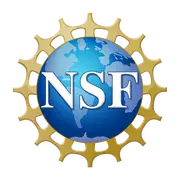ICARUS Chamber Experiment: Caltech Atmospheric Chamber_20140816_2-Methyl-3-buten-1-ol/Methyl nitrite/10102-44-0/OZONE_Hydroxyl radical_No Seed_Dry
Goals:
This experiment was done to react 2-Methyl-3-buten-1-ol (231 MBO) with ozone to produce the Hydroxymethylpropanal (HMPR). After oxidizing HMPR with OH in the high NO2 condition, we get the HMPR-PAN (or the peroxynitrate of HMPR). This is analogous to MPAN except it has an OH at the 1-position and no double bond, so that when OH abstracts a hydrogen from HMPR-PAN, it makes the exact same alkyl radical as OH addition to MPAN. The only difference is that the alkyl radical from OH + HMPR-PAN is not created with excess energy, compared to OH addition radicals. Thus...the thermalized radical from HMPR-PAN is not hypothesized to have enough energy to form HMML, and therefore wont form secondary organic aerosol (SOA).
Summary:
The reaction did not produce any significant amounts of SOA from the OH+HMPR-PAN reaction. Therefore the hypothesis is validated, that the alkyl radical of MPAN +OH goes to HMML because it is formed with excess energy through OH addition. We showed the exact same alkyl radical with less energy will add O2 instead of decomposing to HMML.
Organization: Caltech Atmospheric Chamber
Lab Affiliation: California Institute of Technology, Pasadena, CA
Chamber: Near/Far Bag 2012-2015 (Tran)
Experiment Category: Gas phase chemical reaction, Aerosol formation
Oxidant: Hydroxyl radical
Reactants: 2-Methyl-3-buten-1-ol, Methyl nitrite, 10102-44-0, OZONE
Reaction Type: Photooxidation
Relative Humidity: 4
Temperature: 25
Pressure: 750 Torr
- ICARUS Experiment Details
- https://icarus.ucdavis.edu/experiment/619
1 Files, 803.68 KB Total Size
Individual Files - View, select, and download individual files from this Dataset.
Zip File - Download a ZIP file containing all files.
Python script - Download all files via Python 3, preferred for all operating systems.
Wget shell script - Download all files using Wget, preferred for Linux.
Curl shell script - Download all files via Curl, preferred for MacOS.
- Temporal Range
- 2014-08-16 to 2014-08-16
- Related Links
- Publication - Mechanism of the hydroxyl radical oxidation of methacryloyl peroxynitrate (MPAN) and its pathway toward secondary organic aerosol formation in the atmosphere
- GCMD Science Keywords
- GCMD Instruments
- File Media Types
Caltech Atmospheric Chamber
wkong@caltech.edu
UCAR/NCAR - GDEX
gdex@ucar.edu
- Legal Constraints
- Creative Commons Attribution 4.0 International License.
- Access Constraints
- These data are openly accessible by all registered users. Accounts are available free of charge following the registration of user information with a valid email address.
- Full Metadata DIF XML
ISO19139 XML
OAI DC
JSON-LD
- Version History
- 20230823-020153
- 20230822-020209
- 20230821-020113
- 20230820-020233
- 20230819-020248
- 20230818-020250
- 20230817-020306
- 20230816-020205
- 20230815-020149
- 20230814-020130
- 20230813-020137
- 20230812-020138
- 20230811-020135
- 20230810-020148
- 20230809-020110
- 20230808-020139
- 20230807-020311
- 20230805-020130
- 20230804-020111
- 20230803-020140
- 20230802-015955
- 20230801-015954
- 20221127-082055
- 20221127-075119
- 20221127-072833
- 20221127-020425
- 20221126-020519
- 20221125-020332
- 20221124-020412
- 20221123-020605
- 20221122-020537
- 20221121-020348
- 20221120-020405
- 20221119-020313
- 20221117-020353
- 20221116-020324
- 20221115-020421
- 20221114-020326
- 20221113-020343
- 20221112-020350
- 20221111-020414
- 20221110-020353
- 20221109-020406
- 20221108-020532
- 20221107-020254
- 20221106-010256
- 20221105-020303
- 20221104-020343
- 20221103-020335
- 20221102-020305
- 20221101-020430
- 20221031-020340
- 20221030-020311
- 20221029-020412
- 20221028-020327
- 20221027-020343
- 20221026-020354
- 20221025-020657
- 20221024-020350
- 20221023-020345
- 20221022-020326
- 20221021-020427
- 20221020-020441
- 20221019-020452
- 20221018-020821
- 20221017-020438
- 20221016-020614
- 20221015-020531
- 20221014-020526
- 20221013-020418
- 20221012-020453
- 20221011-020342
- 20221010-020343
- 20221009-020405
- 20221008-020429
- 20221007-020358
- 20221006-020434
- 20221005-020417
- 20221004-020411
- 20221003-020426
- 20221002-020438
- 20221001-020518
- 20220930-020406
- 20220929-020430
- 20220928-020357
- 20220927-020359
- 20220926-020649
- 20220925-020354
- 20220924-020435
- 20220923-020435
- 20220922-020454
- 20220921-020409
- 20220920-020435
- 20220919-020423
- 20220918-020403
- 20220917-021058
- 20220916-020343
- 20220915-020405
- 20220914-020418
- 20220913-020412
- 20220912-020428
- 20220911-020338
- 20220910-032329
- 20220909-020426
- 20220908-020440
- 20220907-020617
- 20220906-020522
- 20220905-020559
- 20220904-020436
- 20220222-020911
- 20220221-021039
- 20220220-020851
- 20220219-020916
- 20220218-020913
- 20220217-020928
- 20220204-020256
- 20220203-020256
- 20220202-020442
- 20220201-020505
- 20220131-020243
- 20220130-020240
- 20220129-020335
- 20220128-021913
- 20220127-022259
- 20220126-020224
- 20220125-020346
- 20220124-020356
- 20220123-020248
- 20220122-020254
- 20220121-020312
- 20220120-020309
- 20220119-020259
- 20220118-020313
- 20220117-020238
- 20220116-020155
- 20220115-020217
- 20220114-020229
- 20220113-020257
- 20220112-020238
- 20220111-020242
- 20220110-020224
- 20220109-020156
- 20220108-020227
- 20220107-020147
- 20220106-020213
- 20220105-020228
- 20220104-020245
- 20220103-020143
- 20220102-032419
- 20220101-020221
- 20211231-020158
- 20211229-020133
- 20211228-020127
- 20211227-020125
- 20211226-020125
- 20211225-020124
- 20211224-020114
- 20211223-020117
- 20211222-020119
- 20211221-020139
- 20211220-020122
- 20211219-020112
- 20211218-020108
- 20211217-020156
- 20211216-020223
- 20211215-020140
- 20211214-020126
- 20211213-020110
- 20211212-020104
- 20211211-020053
- 20211210-020118
- 20211209-020141
- 20211208-020109
- 20211207-020134
- 20211206-020115
- 20211205-020043
- 20211204-020102
- 20211203-020128
- 20211202-020052
- 20211201-020148
- 20211130-020122
- 20211129-020057
- 20211128-020041
- 20211127-020104
- 20211126-020127
- 20211125-020108
- 20211124-020109
- 20211123-020051
- 20211122-020059
- 20211121-020043
- 20211120-020057
- 20211119-020135
- 20211118-020823
- 20211117-020152
- 20211116-020223
- 20211115-020341
- 20211114-020127
- 20211113-020139
- 20211112-020151
- 20211111-020128
- 20211110-020128
- 20211109-020145
- 20211108-020114
- 20211107-010056
- 20211106-020127
- 20211105-015949
- 20211104-015951
- 20211103-020427
- 20211102-020548
- 20211101-020535
- 20211031-020458
- 20211030-020427
- 20211029-020439
- 20211028-020509
- 20211027-020448
- 20211026-020505
- 20211025-020455
- 20211024-020410
- 20211023-020417
- 20211022-020459
- 20211020-021334
- 20211019-021405
- 20211016-021211
- 20211015-021412
- 20211012-020639
- 20211006-020246
- 20211005-015713
- 20211004-015640
- 20211003-015631
- 20211002-015637
- 20211001-015756
- 20210930-015843
- 20210929-015325
- 20210928-015305
- 20210926-015229
- 20210902-115402
- 20210901-134542
- Authors
- Seinfeld, John
- Suggested Citation
- Downloads
- 9
- Download Volume
- 7.06 MB Total

